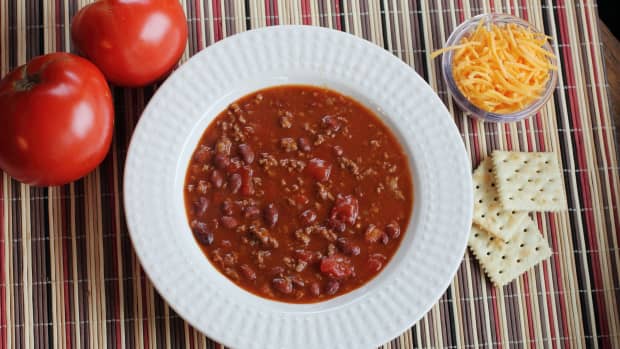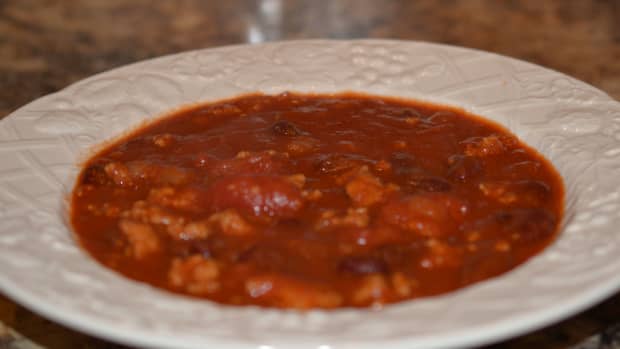A Simple and Stress-Free Guide to Freezing Chili
Chili con carne is one of my favorite comfort foods, especially on cold days. But sometimes I have too many leftovers, and I don’t want to waste them or eat the same thing for days. So I learned how to freeze chili properly, and it was a game-changer. Now I can enjoy a warm bowl of chili con carne any time—without losing its flavor, texture, or quality. I’ll show you how!
Can You Freeze Chili?
Yes, you can definitely freeze chili con carne. It’s best to freeze it the same day you cooked it to avoid any harmful bacteria developing. If you only refrigerate chili, you must eat it within three to four days to prevent spoilage. Freezing is an excellent way to extend its shelf life, with some ingredients allowing for up to six months of storage.
Is It Safe To Freeze Chili After 3 or 4 Days?
It is generally safe to freeze it after 3 or 4 days, but the sooner you pop it in the freezer, the fresher it will stay!
Some Benefits of Freezing Chili
- Batch Cooking is Convenient and Flexible: When done right, freezing your chili will make future meals more convenient and flexible. Making a big batch on the weekend and dividing it into smaller portions for easy meals later on is a great way to plan ahead. Also, reheated chili is versatile and can be used as a base for other dishes such as nachos, burritos, or casseroles.
- Portioning is Budget-Friendly: Freezing portions will also save you time and money; you can take advantage of seasonal produce or sales on meat and beans. Instead of buying expensive or out-of-season ingredients, simply make extra chili when food is cheap or in season and freeze it for easy meals later!
Does Freezing Affect The Taste Or Texture Of Chili Con Carne?
Not all chilis freeze well, and some types freeze better than others, depending on their ingredients and consistency.
Meat-Based Chili
Meat-based chili freezes very well. That's because meat retains flavor and texture well, even after freezing and thawing. Particularly if you use ground meat or small chunks of meat. However, I always avoid using large pieces of meat or bones in my recipes. If the pieces are too big, they can dry out or become tough after thawing.
Vegetarian Chili
Vegetarian chili can also be frozen successfully. However, some vegetables and beans can lose crispness or firmness after freezing and thawing. You can prevent this by undercooking vegetables and beans before freezing them. This way, they won’t become mushy when reheated!
Creamy Chili
Creamy chili is the trickiest type to freeze. Dairy products tend to separate or curdle when frozen and thawed, resulting in a grainy or watery texture. Here's a clever way to avoid that: use full-fat dairy products because they're more stable than low-fat ones. And by adding some cornstarch or flour before freezing it, you can bind the ingredients together.
What Is The Best Container To Freeze Chili?
Both plastic containers and Ziploc bags are good options for freezing chili, but they have some pros and cons to consider.
Plastic Containers
- Reusable and eco-friendly.
- Sturdy and stackable, which saves space and prevents spills.
- Easy to label and organize.
- Microwave-safe, which makes reheating easier.
Some plastic containers are bulkier and more expensive than Ziploc bags, and some may crack or warp and absorb odors from the chili. I choose Rubbermaid Brilliance Storage Containers because they stack easily, don't leak, and are microwave and freezer-friendly. They are great at keeping unwanted moisture out, too!
Ziploc Bags
- Cheap and disposable.
- Flexible and can fit into any space in the freezer.
- Can freeze your chili flat, which makes thawing faster and more even.
- Can be cut open and squeezed out, which reduces waste.
Ziploc bags are not very durable, though. They generate more plastic waste, and require transferring chili to another container for microwave reheating.
How Should You Prepare Chili Con Carne For Freezing?
To freeze chili, fully cool it down, place it in freezer-safe containers, label them clearly, and freeze flat or upright, checking that portions don’t touch the freezer edges or one another for optimal storage. Let's break those steps down:
1. Cool Your Chili Completely
Putting hot food in the freezer can cause temperature fluctuations which affect its quality, as well as other food inside. To cool your chili down, you can place it in a large bowl over a bed of ice water or spread it out onto a baking sheet. Always wait until the chili reaches room temperature before you freeze it to ensure proper storage.
2. Divide into Desired Portions
I like using either freezer-safe containers or Ziploc bags to store my chili. Make sure you choose airtight and leak-proof containers or bags to prevent freezer burn and contamination. Chili can also be frozen using silicone molds or vacuum sealers. Depending on the batch size and how often you plan to eat it, you could divide it into single servings or larger batches.
3. Label Your Containers or Bags
Labeling your containers or bags is key to keeping track of how long your chili has been frozen and what ingredients it contains. I always write down the freezing date and chili type on each container or bag. At the same time, you could note other useful information, such as the cooking method, spice level, or serving size.
4. Leave Some Space at the Top
It's a good idea to leave some space at the top of your bags or containers because soups and stews expand during freezing. So allowing some room for expansion prevents the bag from bursting. A general rule of thumb is to leave about an inch of space. It will allow air circulation around the food, which helps it freeze faster and evenly.
5. Freeze Your Chili Flat or Upright
If you're using freezer bags, you can lay them flat on a baking sheet until solid, then stack them up to save space. This also makes it easier to thaw and reheat your chili later. Containers will happily sit upright, but try to make sure they aren't touching each other or the freezer sides. This prevents them from sticking together or cracking due to pressure.
How to Freeze Chili Without Freezer Burn
This is a common problem that affects frozen food. It happens when air comes in contact with the food and causes it to dry out and lose its flavor and texture. Freezer burn can make any food look unappetizing and taste bland or stale.
To prevent freezer burn, you have to reduce air exposure. Here's how to do that:
- Use high-quality freezer bags or containers that are thick and durable. Avoid thin or flimsy ones that can tear or leak easily.
- Squeeze out as much air as you can from the bags or containers before sealing them. You can use a straw to suck out the air from the bags or press down on the containers to expel the air.
- Wrap freezer bags or containers with aluminum foil or plastic wrap for extra protection. This will create another layer of barrier between the chili and the air.
Finally, store your chili in the coldest part of your freezer, away from the door or vents. Doing this prevents temperature fluctuations that cause condensation and ice crystals to form on food.
By following these simple steps, you can freeze chili properly and reheat it safely and deliciously at any time!
Citations
- Freezing and Food Safety | Food Safety and Inspection Service
If previously cooked foods are thawed in the refrigerator, you may refreeze the unused portion. Freeze leftovers within 3-4 days.
This content is accurate and true to the best of the author’s knowledge and is not meant to substitute for formal and individualized advice from a qualified professional.
© 2023 Louise Fiolek













